Recommended
Categories
Reprinted Articles
Learn How to Play Piano |
|---|
| by Nick Krueger |
|
Some people are more musically inclined than others, but that doesn't mean you cannot learn how to play the piano. Many tricks of the trade exist that can have you playing the piano within a couple of months of practice, and some online courses even claim to help you learn much faster. No matter what is claimed or what is available, the most important aspect of learning how to play any new instrument, hobby, or art form is dedication and practice. Listening to Beethoven, Mozart, or any other genius composers might make you want to sign up with the best instructor you can find. Your aim might be to enthrall others with the beauty of classical, modern, or even jazz piano playing. Many adults who learn how to play the piano choose to do so through rigorous methodologies of learning the fundamentals of music first. This requires dedication and lots of practice, not to mention the cost of an instructor. For other learners who want to give the piano a try, quicker methods won't mean you will enjoy playing the piano any less. It simply means you will not have the fundamental base that someone else has learned over a longer period. One of these quicker methods, both on and offline, involve the learning of chords. In an evening, someone who knows nothing about the piano might have the ability to play a melody just on chords alone. Playing by chords is usually encouraged more than playing by tablature. And, there are no problems with those who first learn chords then learn to read music later on. Any piano melody is made up of its smallest parts - its notes. Those who learn chords do not actually learn these 'smallest' pieces, but instead learn how to break the music into chunks. By dealing with songs one chunk at a time and matching what is heard, many piano players enjoy greater freedom of creativity as they progress. One who learns how to play the piano using chords does it more so through trial and error. This person may not actually be able to read musical notations or scores, but he or she will at least be able to judge what chord is played and for how long. As the tune or melody is practiced, usually by breaking a song up into its basic elements and listening to it as it is being played, the person matches what he or she is hearing. A player who learns how to play the piano by ear will not necessarily be able to judge if a key is sharp or flat, and that's where having some basic knowledge of the notes comes in handy. If you need to stay in key F-major, for example, then you will know how to keep that note flat during the entire scale. While flat keys and sharp keys follow similar patterns, learning how to play the piano is not based on this alone. For teenagers or adults who are inspired and self-motivated enough to pursue their goals, learning how to play the piano can be done within a short amount of time. About The AuthorNick Krueger is a review specialist at http://Reviewica.com. For more information on learning to play the piano and related product reviews, please visit: http://Learn-to-Play-Piano.Reviewica.com. |
Recommended Stuff
Beginner Piano:
| Learn Songs - Learn 3 Easy Songs, free Virtual Piano provided |
| Chords - Learn how to construct Major Chords, Primary Chords & more |
| Music Theory - Key Signatures, Major Scales, Intervals & more |
| Improvisation - Chord Inversions, and different Chord Patterns |
| Techniques - Pentatonic Scale, Whole Tone Scale, Arpeggio |
Free Piano Reference
Music Terms Glossary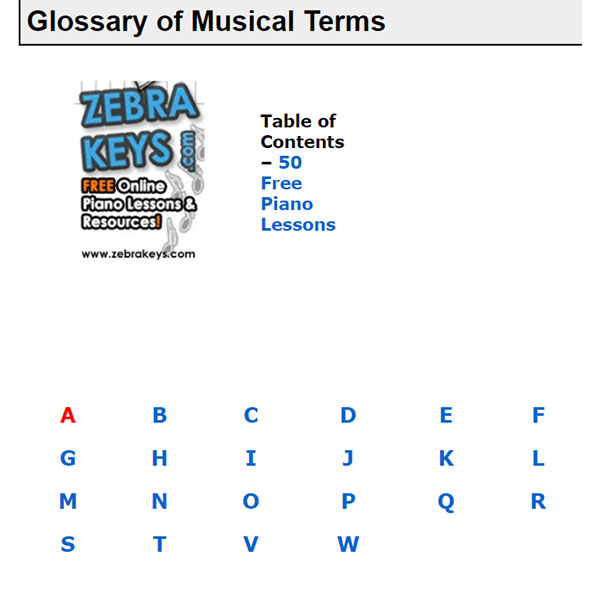 |
FIND any CHORDS using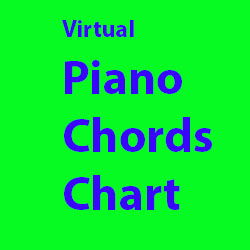 |
Music Notation Chart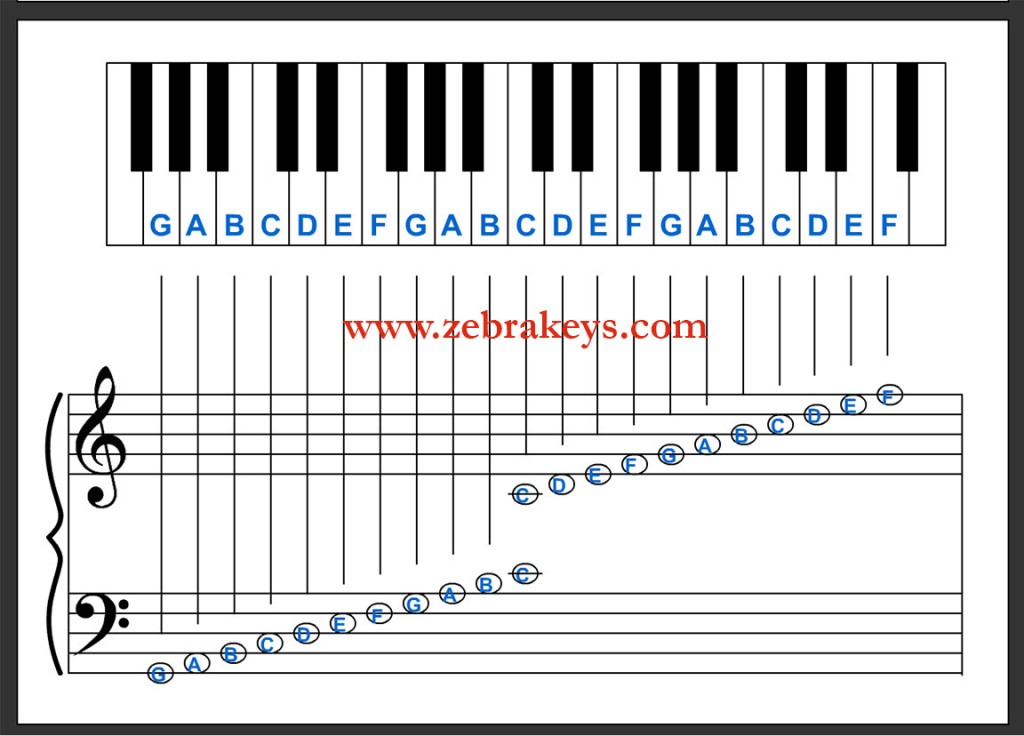 |
| TRANSLATE this content |
| Beginner Piano | | | Intermediate Piano | | | Advanced Piano |
|
List of 50 Free Lessons
Piano Basics 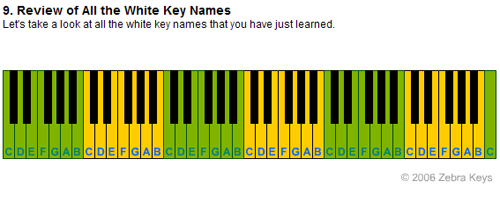 Lesson 1 - Patterns of Piano Keyboard Lesson 2 - Names of White Keys Lesson 3 - Names of Black Keys Lesson 4 - Grand Staff Lesson 5 - Note Durations |
Use our free Virtual Piano Keyboard in conjunction with these free lessons:
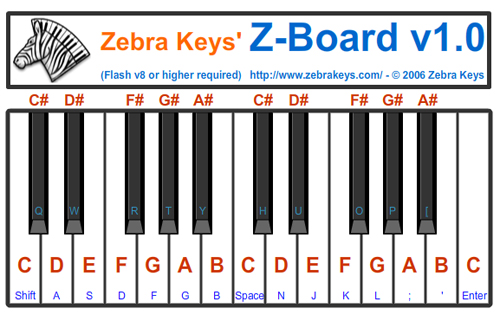 |
|
Beginner Piano Lesson 6 - Brother John Lesson 7 - London Bridge Is Falling Down Lesson 8 - Twinkle Twinkle Little Star |
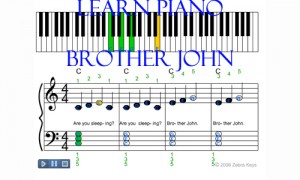 |
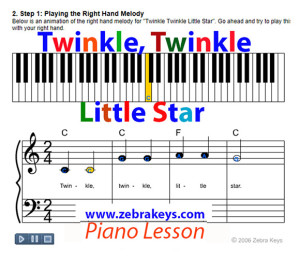 |
| Lesson 9 - Major Chord |
|
FIND any CHORDS using Free Virtual Piano Chord Chart 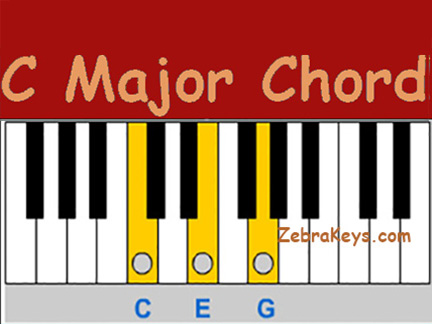 |
|
Lesson 10 - Three Primary Chords Lesson 11 - 12 Bar Blues Chord Progression |
| Lesson 12 - 12 Keys of Music |
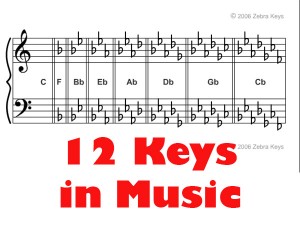 |
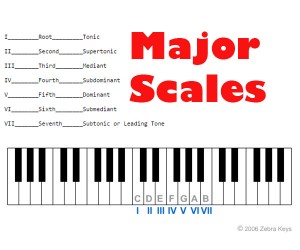 |
|
Lesson 13 - Major Scale
Lesson 14 - Musical Intervals Lesson 15 - Chords of the Major Scale Lesson 16 - The Circle of Fifths |
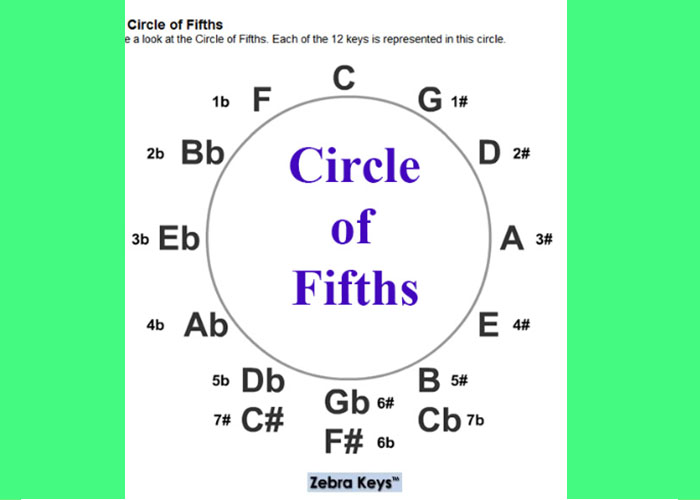 |
|
Lesson 17 - Chord Inversions Lesson 18 - Double Chord Pattern Lesson 19 - Broken Chord Pattern Lesson 20 - Arpeggio Chord Pattern Lesson 21 - Sounds of the Orient (Pentatonic Scale) Lesson 22 - Mysterious Sounds (Whole Tone Scale) Lesson 23 - Arpeggios |
|
Intermediate Piano Lesson 24 - America (My Country Tis of Thee) Lesson 25 - Silent Night Lesson 26 - God Rest Ye Merry Gentlemen |
|
Lesson 27 - Minor Chord Lesson 28 - Three Secondary Chords Lesson 29 - Dominant 7th Chord Lesson 30 - Major 7th Chord Lesson 31 - Minor 7th Chord Lesson 32 - Natural Minor Scale Lesson 33 - Chords of the Natural Minor Scale |
|
Lesson 34 - Melody as Octaves Lesson 35 - Root Chord Pattern Lesson 36 - Harmony Notes Lesson 37 - Major Chord Inversions Lesson 38 - Chord Inversion Straddles |
|
Advanced Piano Lesson 39 - The First Noel (Flash demo version) Lesson 40 - Auld Lang Syne Lesson 41 - Hark! The Herald Angels Sing |
|
Lesson 42 - Diminished Chord Lesson 43 - Augmented Chord Lesson 44 - 6th Chords Lesson 45 - Sus2 Chords Lesson 46 - Sus4 Chords Lesson 47 - Major 9th Chords Lesson 48 - Major 11th Chords Lesson 49 - Major 13th Chords Lesson 51 - Blues Scale |






